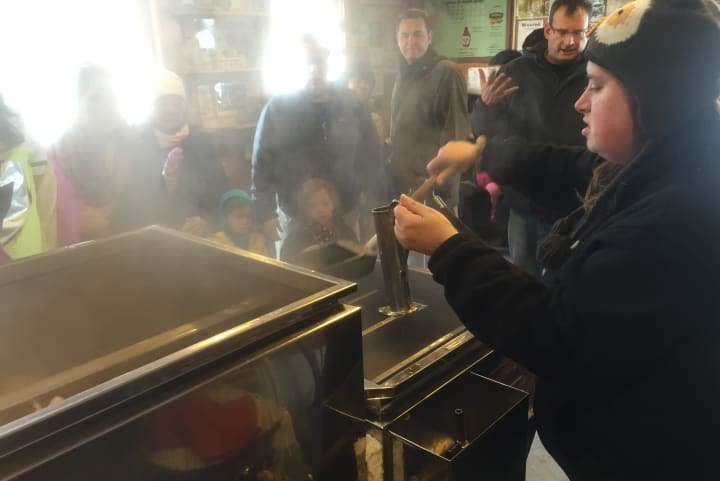Visitors got a glimpse Sunday at the last open house of the season as volunteer Allan Klumac and staff member Lisa Monachelli took them through the process of tapping sugar maple trees and boiling the sap down to produce the syrup.
It takes about an hour to boil 40 gallons of sap to one gallon of syrup. The boiling separates the water and concentrates the sugar, so that the finished product is about 67 percent sugar and 33 percent water.
“We’ve made about 10 gallons so far this year. Usually at this time of the year we get around 60 gallons or more,” said Klumac.
The cold weather has made it difficult, as ideal conditions will see cold nights and warm days to get the most sap out of the sugar maple trees on the Nature Center property.
“Usually it starts around Valentine’s Day, and we finish around April 1. This year we didn’t tap our trees until March 3, which is two weeks later than we normally would tap, and we still didn’t get any sap until last week.”
Klumac said they’re hopeful that the next few weeks will have the weather conditions needed to get a full season’s worth of syrup. The Nature Center has about 300 trees that they tap for sap. The sap is stored in two 230-gallon tanks before being boiled and concentrated down. The sap can be stored only for a day or two before it starts to grow bacteria that lowers the sugar content.
Monachelli said they don’t add anything to the product. Legally, it can’t even be called maple syrup unless it’s pure maple sap. Many popular products such as Log Cabin or Aunt Jemima use corn syrup instead of pure maple sugar.
The sap is boiled over a wood-burning stove that uses old maple trees from the property.
“We usually lose a couple trees on the property each year due to storms, so we convert that into firewood to be sustainable,” Monachelli said.
Click here to follow Daily Voice Stamford and receive free news updates.



